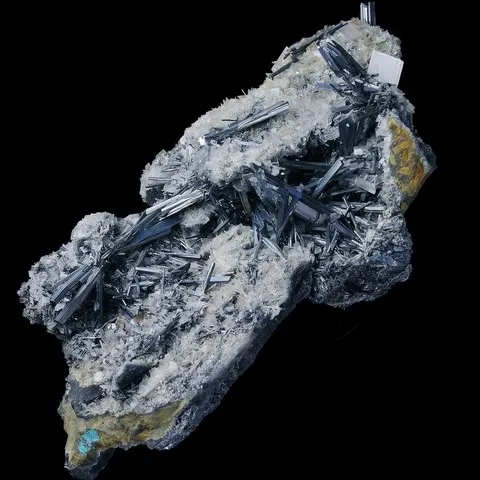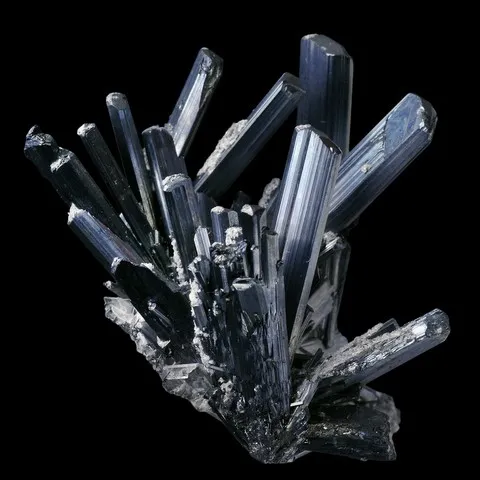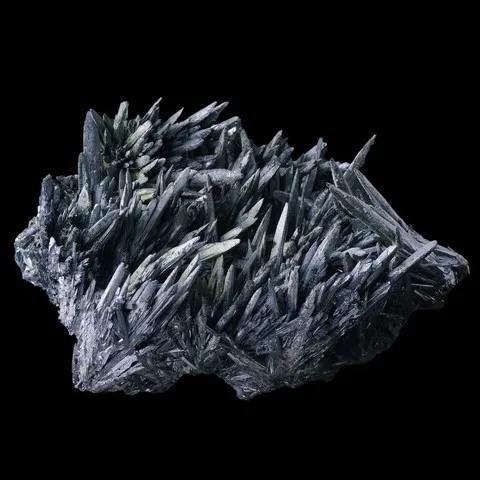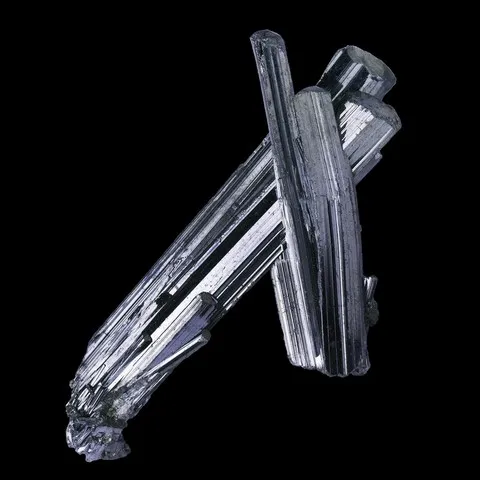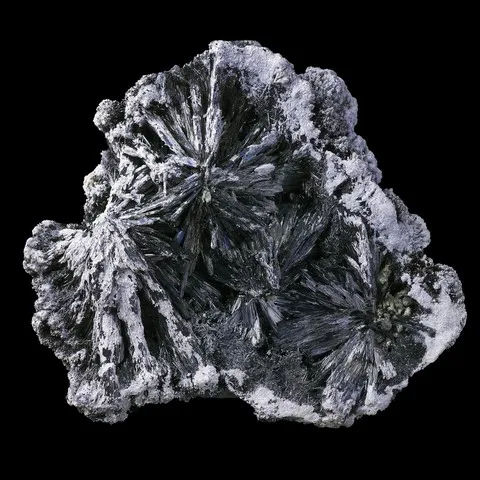STIBNITE
Class : Sulfides and sulfosalts
Subclass : Sulfides
Crystal system : Orthorhombic
Chemistry : Sb2S3
Rarity : Fairly common
Stibnite is the most common of the minerals of antimony, of which it constitutes the ore. Its name comes from the Greek stibi and then from the Latin stibium, the ancient name of antimony. It is found in hydrothermal deposits from low to high temperatures. It generally crystallizes in elongated to acicular prisms with striations according to the elongation. The crystals are flexible, bend under stress and melt in the flame of a candle by dyeing it in blue-gray. It is a gray metallic mineral which easily alters in white to yellowish oxides, including stibiconite or cervantite, which can completely replace it. These pseudomorphs can sometimes be associated with red speckles of kermesite. It is a mineral that is not used in jewelery because of its low hardness, but crushed it was used in Antiquity as kohol (silver gray eyeshadow) especially in Ancient Egypt. The antimony which was extracted from it was associated with the lead. It was used in the manufacture of the printing-type, and made it harder. Antimony is also a flame retardant in the textile and plastics industry or a pigment used in the manufacture of glass and pyrotechnics.
Stibnite in the World
Stibnite in France
France has produced some of the most beautiful crystals in the world : the ancient Lucette mine in Mayenne, the world's largest deposit at the beginning of the 20th century, provided prisms that could sometimes reach 30 cm in length for 2,5 cm wide. 15 cm crystals were also extracted from the Dahu mine (Lubilhac, Haute-Loire).
Twinning
Stibine has several possible twinning planes, but they are rarely observed in nature : {120}, {130} and {310}. The deformation twinning are very frequent, they look like polysynthetics.
Fakes and scams
Among the known fakes are assemblages (stibnite crystals glued to calcite or realgar) especially on certain specimens coming from Romania. It should be noted that these associations exist in nature. More vicious, crystals of Romanian stibine and assemblages served as a support for the laboratory crystallizations of potassium dichromate (lopezite) which by its color resembles the realgar.
Hardness : 2 à 2,5
Density : 4,6
Fracture : Irregular to conchoidal
Trace : Grey to black
TP : Opaque
IR : Unmeasurable
Birefringence : Unmeasurable
Optical character : None
Pleochroism : None
Fluorescence : None
Solubility : Nitric and hydrochloric acid
Magnetism : None
Radioactivity : None

